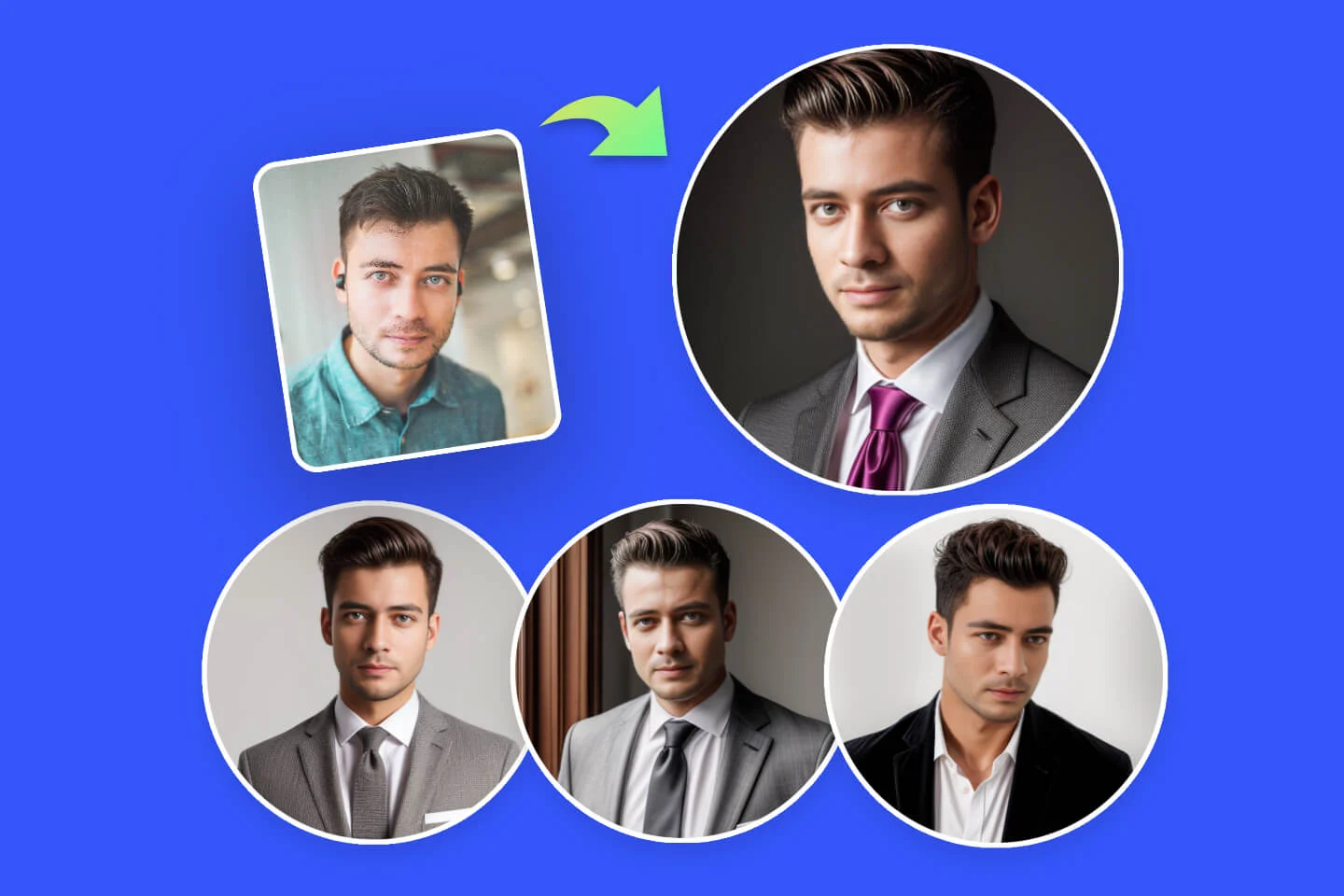From Pixels to Portraits: Understanding the Technical Aspects of AI Headshot Generation
The world of professional headshots is undergoing a significant transformation. Gone are the days of solely relying on traditional photography studios. Artificial intelligence (AI) is making its mark on the industry, introducing AI headshot generators that create professional-looking portraits with a few clicks. But how exactly does this technology work, and what are the technical aspects driving this revolution?
This blog delves into the fascinating world of AI headshot generation, exploring the underlying technology and its implications for photographers and individuals seeking professional portraits.
Demystifying AI: The Core of Headshot Generation
At the heart of AI headshot generation lies a powerful technology known as deep learning. Deep learning is a subfield of machine learning that utilizes artificial neural networks, loosely inspired by the structure and function of the human brain. These neural networks consist of multiple layers, each containing interconnected nodes (artificial neurons) that process information.
Here’s a simplified breakdown of the process involved in AI headshot generation:
- Data Acquisition: A vast collection of high-quality professional headshots serves as the training ground for the AI. These images encompass diverse ethnicities, genders, ages, and facial features.
- Feature Extraction: The deep learning model meticulously analyzes the training data, identifying and extracting key features from each headshot. This includes facial landmarks like eyes, nose, and mouth, as well as details like skin texture, hair style, and lighting variations.
- Pattern Recognition: As the AI processes the training data, it starts to recognize patterns and relationships between the various features and the overall composition of a professional headshot. It learns to understand what constitutes a well-lit, professional-looking portrait.
- Image Generation: Once the AI has grasped these complex relationships, it can then generate new headshots. When a user uploads a photo, the AI analyzes it, identifies the facial features, and leverages its learned patterns to create a professional headshot based on the training data. These tools can even create images from text. You have to describe what type of image or headshot you are required to create.
The Rise of AI Headshot Generators
Professional headshots have long been a staple in various industries, including business, entertainment, and social media. Traditionally, photographers capture these portraits using specialized equipment and techniques, involving meticulous lighting setups and post-processing editing. While this approach yields stunning results, it often comes with a hefty price tag and time commitment.
AI headshot generators offer a cost-effective and efficient alternative to traditional photography methods. Leveraging the power of machine learning algorithms, these systems can analyze facial features, skin tone, and other parameters to generate realistic-looking portraits from scratch. This technology has gained widespread popularity in recent years, thanks to its ability to produce professional-quality headshots in a matter of seconds.
The Technical Nuances of AI Headshot Generation
While the core concept seems straightforward, several technical aspects contribute to the effectiveness of AI headshot generators:
- Generative Adversarial Networks (GANs): A specific type of deep learning architecture often employed in AI headshot generation. GANs involve two competing neural networks: a generator and a discriminator. The generator creates new headshots, while the discriminator evaluates them against the real professional headshots in the training data. Through this continuous evaluation and refinement, the generator progressively improves its ability to produce realistic and professional-looking portraits.
- Background Replacement: AI models are adept at replacing the background of an uploaded photo with a professional headshot backdrop. This eliminates the need for users to have a studio setup and ensures consistency in the final portrait.
- Pose and Expression Control: Some AI headshot generators offer limited control over pose and expression. Users might be able to select from a few pre-defined options, allowing for a touch of personalization in the generated portrait.
- Advanced Techniques: Researchers are constantly exploring new techniques to push the boundaries of AI headshot generation. This includes methods for handling imperfections in uploaded photos, such as blemishes or glasses, and for incorporating subtle variations in lighting and shadows to create a more natural look
Key Technical Aspects
Facial Recognition and Feature Extraction
AI headshot generators rely on advanced facial recognition algorithms to analyze key facial features and attributes. These algorithms identify landmarks such as eyes, nose, mouth, and contours, enabling the system to accurately capture the subject’s likeness. Feature extraction techniques further enhance the generator’s ability to replicate intricate details, including skin texture, hair, and facial expressions.
Style Transfer and Artistic Rendering
In addition to replicating realistic portraits, AI headshot generator can apply various artistic styles and effects to the generated images. This is achieved through style transfer algorithms, which imbue the portraits with unique visual aesthetics inspired by famous artists, photography styles, or creative filters. By enabling users to customize the look and feel of their headshots, these capabilities add a creative dimension to the AI-generated portraits.
Diversity and Inclusivity
One of the notable advantages of AI headshot generators is their ability to generate diverse portraits representing individuals from different ethnicities, ages, and cultural backgrounds. By training the algorithms on a diverse dataset of facial images, developers ensure that the generated headshots are inclusive and representative of various demographics. This fosters greater inclusivity and accessibility in professional photography, catering to a broader audience and promoting diversity in visual representation.
Ethical Considerations and Privacy Concerns
While AI headshot generators offer numerous benefits, they also raise important ethical considerations and privacy concerns. For instance, there is a risk of misuse or manipulation of generated images for deceptive purposes, such as identity theft or impersonation. Additionally, the proliferation of AI-generated headshots may raise questions about consent and ownership rights, particularly when using someone’s likeness without their explicit permission. Addressing these ethical issues requires careful regulation, transparency, and ethical guidelines to ensure responsible use of AI technology in portrait generation.
Applications of AI Headshot Generators
The versatility and accessibility of AI headshot generators have led to a wide range of applications across various industries and domains. Some common use cases include:
- Professional Branding and Marketing: Businesses and professionals use AI-generated headshots for branding, marketing materials, and online profiles. These portraits convey a polished and professional image, enhancing brand credibility and recognition.
- Entertainment and Media: Actors, models, and performers leverage AI headshot generators to create compelling portfolios, audition reels, and promotional materials. The ability to generate custom headshots quickly and affordably streamlines the casting and auditioning process in the entertainment industry.
- Personalized Avatars and Virtual Identities: Online platforms, gaming communities, and virtual reality environments utilize AI headshot generators to create personalized avatars and virtual identities. These avatars enable users to express themselves creatively and engage in immersive digital experiences.
- Training Data Augmentation: AI researchers and developers use generated headshots to augment training datasets for facial recognition, emotion detection, and other computer vision tasks. By diversifying the dataset, researchers can improve the robustness and generalization capabilities of AI models.
Future Directions and Innovations
As AI technology continues to advance, we can expect further innovations and enhancements in the field of headshot generation. Some potential future developments include:
- Real-Time Generation: Advancements in computing power and algorithm efficiency may enable real-time generation of AI headshots, allowing users to customize and preview portraits instantly.
- Enhanced Realism and Detail: Future iterations of AI headshot generators may achieve even greater levels of realism and detail, surpassing the limitations of traditional photography in capturing subtle facial expressions and nuances.
- Interactive Customization Tools: Intuitive user interfaces and interactive customization tools could empower users to fine-tune various aspects of their headshots, from facial features to lighting and background settings.
- Ethical Frameworks and Governance: Continued dialogue and collaboration among stakeholders are essential to establish ethical frameworks, guidelines, and governance mechanisms for the responsible development and use of AI headshot generators.
Conclusion
AI headshot generators represent a transformative technology that streamlines the process of creating professional portraits while offering unprecedented flexibility and accessibility. By understanding the technical aspects and implications of these systems, we can harness their potential to enhance creativity, diversity, and inclusivity in photography and digital art. As AI continues to reshape the landscape of visual representation, it is crucial to embrace responsible practices and ethical considerations to ensure the ethical and equitable use of AI-generated headshots in diverse contexts.




